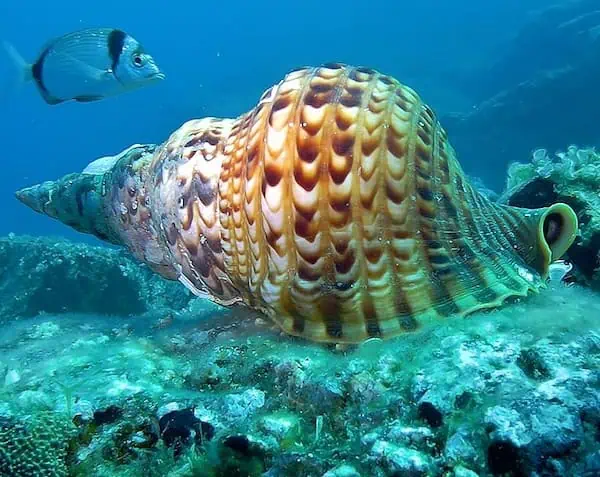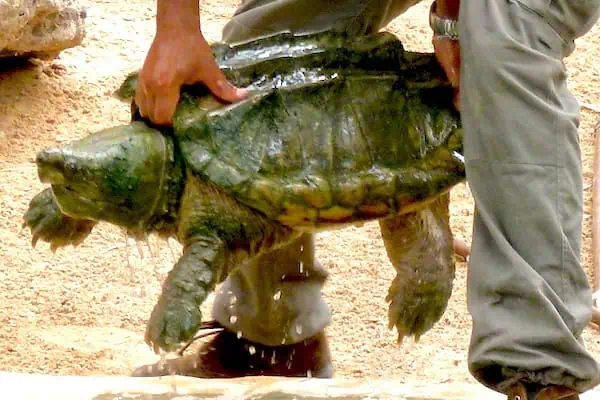In the animal kingdom, shells serve as essential armor, offering protection, support, and survival advantages to a wide array of species. Some animals have evolved to carry exceptionally heavy shells, or shells that are significantly large in proportion to their body size. From terrestrial giants like tortoises to ocean marvels like tritons trumpet, these creatures demonstrate the extraordinary ways nature balances defense and function. In this article, we’ll explore the animals with heavy and large shells, highlighting their unique features and the evolutionary advantages of their robust armor.
What are shells made of?
The material and formation process of shells vary widely depending on the animal’s habitat, mobility, and evolutionary needs. Shells can be bone, keratin, calcium carbonate, chitin, silica, or protein-based, reflecting the diversity of protective adaptations in the animal kingdom. When it comes to most of the big, heavy shells we are looking at in this article, there are three main types.
1. Biomineralization: The animal’s soft outer tissues secretes layers of calcium carbonate, forming a hard, protective shell that continues to grow over time. This is often seen in mollusks like clams, snails and oysters, as well as corals and some crustaceans.
2. Keratin and Bone Shells: The shell is part of the animal’s skeleton, with bone underneath and keratin (a protein) forming protective outer plates. This type of shell is found in reptiles like tortoises and turles, as well as armadillos.
3. Chitin-Based Exoskeletons: Chitin, a polysaccharide, combines with proteins and calcium salts to form a rigid, protective exoskeleton. This provides protection and support, but the animal must molt it in order to grow larger. This type of shell is seen in arthropods like crabs, shrimp, lobsters and insects.
Animals With Heavy Shells
These 15 heavy-shelled animals are found all over the world in a variety of habitats. Whether their shells weigh hundreds of pounds or are just unusually large compared to other species in their family, these shelled animals are truly fascinating.
1. Giant Galapagos Tortoise

The giant Galápagos tortoise is one of the largest and longest-living tortoise species on Earth. These iconic reptiles are native to the Galápagos Islands, an isolated island chain in the Pacific Ocean. They thrive in a variety of habitats, from lush highlands to arid lowlands.
Giant Galápagos tortoises are herbivores, primarily feeding on grasses, leaves, fruits, and cacti, and their slow metabolism allows them to go for long periods without food or water. They can grow up to 5 feet in length and weigh between 250 – 500 pounds, thanks in part to their giant shell!
Their large, domed shells, made of bone and keratin, not only provide protection but also indicate their subspecies and habitat—tortoises in humid highlands tend to have domed shells, while those in arid lowlands often have saddle-shaped shells, allowing them to extend their necks higher to reach vegetation. These remarkable tortoises can live over 100 years in the wild, with some individuals reaching 150 years or more.
2. Giant Armadillo

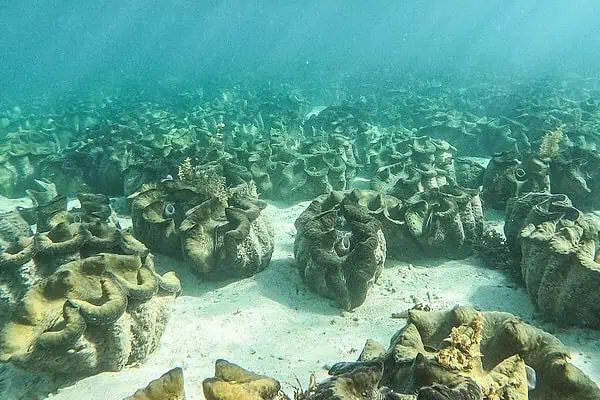
8. Leatherback Sea Turtle

The leatherback sea turtle is the largest sea turtle species, and one of the most migratory. They are found in oceans worldwide, from tropical to subpolar waters. Unlike other sea turtles, they have a flexible, leathery shell rather than large, hard plates. This shell is composed of connective tissue and tiny bone plates, allowing it to withstand deep dives of up to 4,000 feet. They dive deeper than any other turtle, plunging into the depths to avoid predators, find food, or enjoy cooler waters.
These turtles primarily feed on jellyfish, playing a critical role in controlling jellyfish populations. Leatherbacks can grow up to 7 feet in length and weigh between 600 and 1,500 pounds. Their shell may not seem as solid as other turtles but it is still very dense and heavy! Their streamlined body and powerful front flippers enable them to travel thousands of miles during migration. Despite their adaptability, leatherback populations are declining due to threats like habitat destruction, entanglement in fishing gear, and plastic pollution, which they often mistake for jellyfish.
9. Aldabra Giant Tortoise

The Aldabra giant tortoise is one of the largest tortoise species in the world, native to the Aldabra Atoll in the Seychelles. They graze on grasses, leaves, and fruits, often shaping their ecosystem by trimming vegetation and dispersing seeds.
Aldabra giant tortoises can grow up to 4 feet in length and weigh over 550 pounds. Their domed shells are made of fused plates of bone covered by keratin, provide protection against predators and insulation from the harsh island environment. These shells are not only massive but also slightly flattened in some individuals, allowing them to navigate dense vegetation. Known for their impressive longevity, these tortoises can live over 100 years, with some individuals believed to exceed 150 years. They play a crucial role in their ecosystem as keystone species, maintaining balance within their habitat.
10. Green Sea Turtle

Green Sea Turtles are large marine turtles found in tropical and subtropical oceans around the world, often inhabiting seagrass beds and coral reefs. As herbivores, adult green sea turtles primarily feed on seagrasses and algae. They can grow up to 5 feet in length and weigh between 300 and 700 pounds.
Their hard, streamlined shells are made of bony plates covered by a layer of keratin, with smooth scutes that range in color from brown to olive, often patterned with radiating designs. These shells help protect them from predators and provide hydrodynamic efficiency for long migrations, which can span thousands of miles. Despite their resilience, green sea turtles are classified as endangered due to threats such as habitat destruction, poaching, entanglement in fishing gear, and plastic pollution.
11. Giant Horse Conch (a.k.a. Florida Horse Conch)

The horse conch is a large marine snail native to the shallow coastal waters of the southeastern United States, particularly in the Gulf of Mexico. These carnivorous gastropods feed primarily on other mollusks, such as bivalves and smaller snails, using their long proboscis to extract prey from their shells. In 1969, the state of Florida name the horse conch their official state seashell and it is sough-after by shell collectors, mainly due to its large size.
The horse conch can grow up to 2 feet in length, making it the largest snail species in North America. Its heavy, spiral shell is composed of calcium carbonate and features a rough, reddish-brown exterior that provides excellent camouflage in sandy or rocky environments. In contrast, the soft part of their body is a bright orange-red.
12. Chambered Nautilus
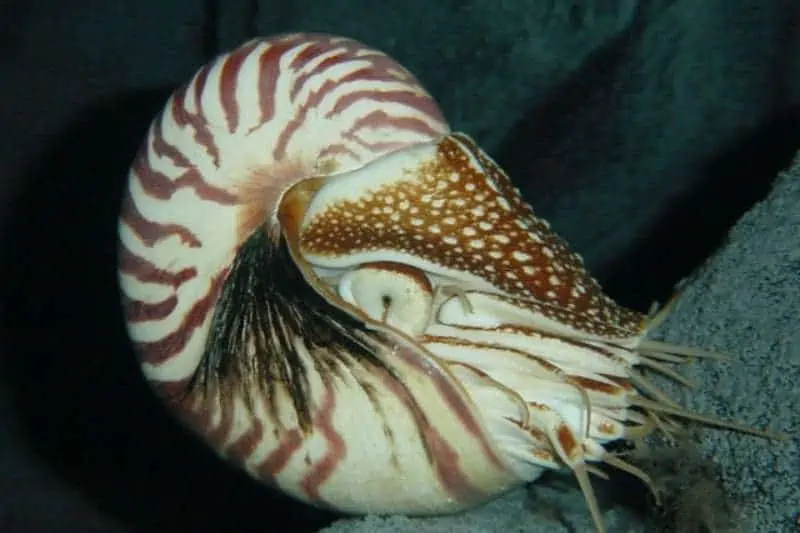
The chambered nautilus is unique looking marine mollusk found in the deep waters of the Indo-Pacific, including areas near the Philippines and Australia. These carnivorous creatures primarily feed on crustaceans and carrion, using their numerous tentacles to grasp prey.
The nautilus is best known for its iconic coiled shell, which can grow up to 10 inches in diameter and is composed of calcium carbonate. The shell features a series of gas-filled chambers that allow the nautilus to regulate its buoyancy, enabling it to float effortlessly at different depths. The exterior of the shell is smooth and patterned with white and brown stripes, providing excellent camouflage in its deep-sea environment. While the nautilus grows slowly and has a long lifespan of up to 20 years, it faces threats from overharvesting for its beautiful shells, making conservation efforts critical for its survival.
13. Lightening Whelk

The lightning whelk, the state seashell of Texas, is a large marine snail found along the Gulf of Mexico and the Atlantic coast of North America, particularly in sandy or muddy tidal flats and shallow waters. As carnivores, lightning whelks feed on bivalves like clams and oysters, using their strong foot to pry open shells.
They can grow up to 16 inches in length and weigh a few pounds, with females generally larger than males. The lightning whelk’s heavy, spiraled shell is composed of calcium carbonate and is distinctively left-handed, or sinistral, meaning the shell opens to the left. This unique feature, along with its intricate patterns of brown or orange stripes against a pale background, makes it a favorite among shell collectors. The thick shell provides excellent protection from predators like crabs and sea stars.
14. African Spurred Tortoise
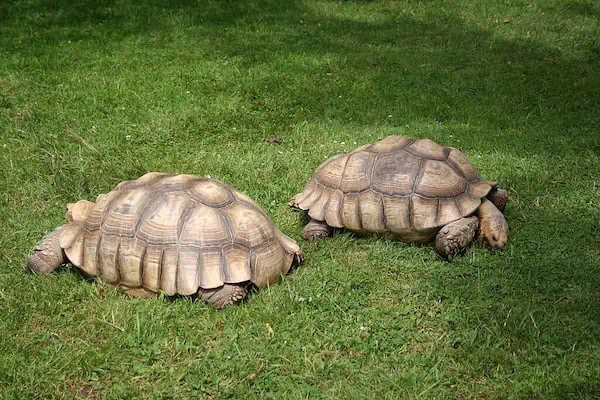
The African spurred tortoise, also known as the sulcata tortoise, is the third-largest tortoise species in the world and the largest on the African continent. These impressive reptiles are native to the arid regions of the Sahara Desert and the Sahel, where they inhabit dry savannas and scrublands. As herbivores, African spurred tortoises primarily feed on grasses, succulents, and other vegetation, and they are well-adapted to survive in harsh, water-scarce environments.
They can grow up to 3 feet in length and weigh between 70 and 200 pounds, with some exceptional individuals exceeding this range. Their rugged, thick shells are covered in spurs along the edges, which help protect them from predators and environmental hazards. The shell is also highly domed, providing additional strength and resilience. Known for their burrowing behavior, these tortoises dig deep tunnels to escape the extreme heat.
15. Giant Pangolin

The giant pangolin is the largest species of pangolin, found in the dense forests and savannas of Central and West Africa. These nocturnal, solitary mammals feed primarily on ants and termites, which they extract using their long, sticky tongues. Giant pangolins can grow up to 4.6 feet in length, including their tail, and weigh as much as 77 pounds.
While they don’t have a single shell like most of the animals on our list, their solid exterior is so unique we thought they deserved a mention. Their bodies are covered in large, overlapping keratin scales that provide robust protection against predators, allowing them to roll into a nearly impenetrable ball when threatened. Known for their strong digging claws, giant pangolins excavate termite mounds and burrows, often using these shelters to rest during the day. Despite their impressive size and adaptations, they are critically endangered due to poaching and habitat loss, as their scales are highly sought after in illegal wildlife trade.
Melanie has a degree in Environmental Science and has always been interested in all things nature from wildlife to plants. In her spare time she enjoys hiking, travel, reading, photography and crochet.


